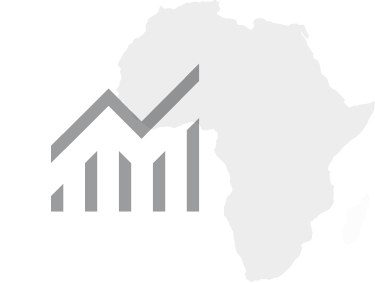Infrastructure in Africa: Unpacking the digital divide
05 February, 2025
Our Index Insight about Infrastructure in Africa unpacks data from the 2024 Ibrahim Index of African Governance (IIAG). The Insight shows that 52 out of 54 countries have reported improvements in Infrastructure, making it the most improved sub-category across the ten-year period of 2014-2023.
Unpacking the digital divide
Infrastructure improvement has been strong, but digital access must remain a priority
The 2024 IIAG shows that Infrastructure was the most improved sub-category across the ten-year period of 2014 to 2023, improving by +7.1. This sub-category also contains the IIAG’s most improved indicator, Mobile Communications (+19.8) as well as the most improved sub-indicator, Access to Mobile Internet (+41.1). Despite these positive trajectories, especially for digital access measures, the majority of the indicators within Infrastructure are starting from concerningly low scores in 2014 meaning there is still a long way to go, particularly for indicators related to digital access and connectivity.
| Sub-indicators | Score (2014) | Score (2023) | 10-year change (2014-2023) | Trend |
|---|---|---|---|---|
| Access to Mobile Internet (ITU) | 40.6 | 81.7 | +41.1 | Slowing Improvement |
| Households with Internet Access (ITU) | 16.9 | 45.8 | +28.9 | Increasing Improvement |
| Access to Mobile Money Accounts (WB) | 15.6 | 42.4 | +26.8 | Slowing Improvement |
| Internet Bandwidth Usage (ITU) | 5.7 | 27.1 | +21.4 | Slowing Improvement |
| Internet Security (WB) | 3.7 | 16.7 | +13.0 | Slowing Improvement |
| Cost of Broadband Internet (Cable) | 67.3 | 78.9 | +11.6 | Increasing Improvement |
| Access to Electricity (WB) | 44.6 | 54.9 | +10.3 | Slowing Improvement |
| Mobile Phone Subscribers (ITU) | 36.0 | 46.0 | +10.0 | Increasing Improvement |
| Cost of Mobile Internet (ITU) | 63.5 | 71.1 | 7.6 | Increasing Improvement |
| Households with Computers (ITU) | 16.4 | 22.5 | 6.1 | Slowing Improvement |
| Access to Clean Cooking (WHO) | 27.1 | 31.3 | 4.2 | Slowing Improvement |
For digitalisation and connectivity, improvements are gathering pace but they are slow and from a low base
The good:
- The 2024 IIAG contains 11 sub-indicators that speak directly to the digital divide, defined here as the gap between citizens who have access to the internet and mobile communications and those who do not.
- All of these 11 sub-indicators experienced a positive ten-year change, with eight of these 11 recording double-digit improvements. However, seven of these 11 indicators reported a smaller five-year change between 2019 and 2023, highlighting a slowing pace of progress. The four sub-indicators to buck this trend are Cost of Mobile Internet, Households with Internet Access, Cost of Broadband Internet and Mobile Phone Subscribers which all registered an Increasing Improvement trend, meaning the years 2019-2023 experienced a higher rate of improvement than 2014-2018.
- Notable improvements were recorded within Access to Mobile Internet which improved by +41.1 points over the decade, the largest improvements across the entire 2024 IIAG. Other major improvements were seen in Households with Internet Access (+28.9) and Access to Mobile Money Accounts (+26.8).
- All 11 indicators registered either a Increasing Improvement or Slowing Improvement trend classification as well.
The disconcerting:
- The positive trajectories across these measures is good news, but it is important to note that seven out of the 11 sub-indicators above started from a score of less than 40.0 points in 2014.
- While the improvements are laudable, many of these sub-indicators rank poorly for overall scores and although they have improved over the decade, some of them started out with single digit scores in 2014, e.g. Internet Security (3.7) and Internet Bandwidth Usage (5.7), meaning there was little scope for deterioration in the first place.
At the country level…
- Mobile internet
- Impressive improvements have been reported by Libya (+93.6), Djibouti (+90.1) and Malawi (+83.8) in Access to Mobile Internet, as well as in Libya (+54.9), Zambia (+32.2) and Angola (+29.6) in Cost of Mobile Internet.
- Computer access
- Strong improvements have been made in Households with Computers by Egypt (+33.2), Angola (+31.4) and Tunisia (+27.3), along with improvements in Households with Internet Access where Algeria (+70.4), Gabon (+68.6) and Côte d’Ivoire (+65.1) saw significant developments.
- Broadband quality
- The largest improvements in Internet Bandwidth Usage were reported by Botswana (+94.9), Djibouti (+92.2) and Uganda (+90.7). Similar growth was seen in Cost of Broadband Internet with Burkina Faso (+84.8), Sierra Leone (+76.7) and Namibia (+76.2) improving the most over the decade.
Also at the country level, the score range is stark between high and low performing countries in Infrastructure:
- In 2014, the sub-category of Infrastructure reported a score range of 74.7 between the highest-scoring country of Mauritius (78.3) and the lowest-scoring country of South Sudan (3.6). This increased to a range of 79.5 between the top-scoring country of Morocco (85.8) and the lowest-scoring country of South Sudan (6.3) in 2023.
- This suggests that Infrastructure has continued to improve at approximately the same rate for both higher and lower scoring countries. Although, the gap between the top and the bottom remains concerningly large.


